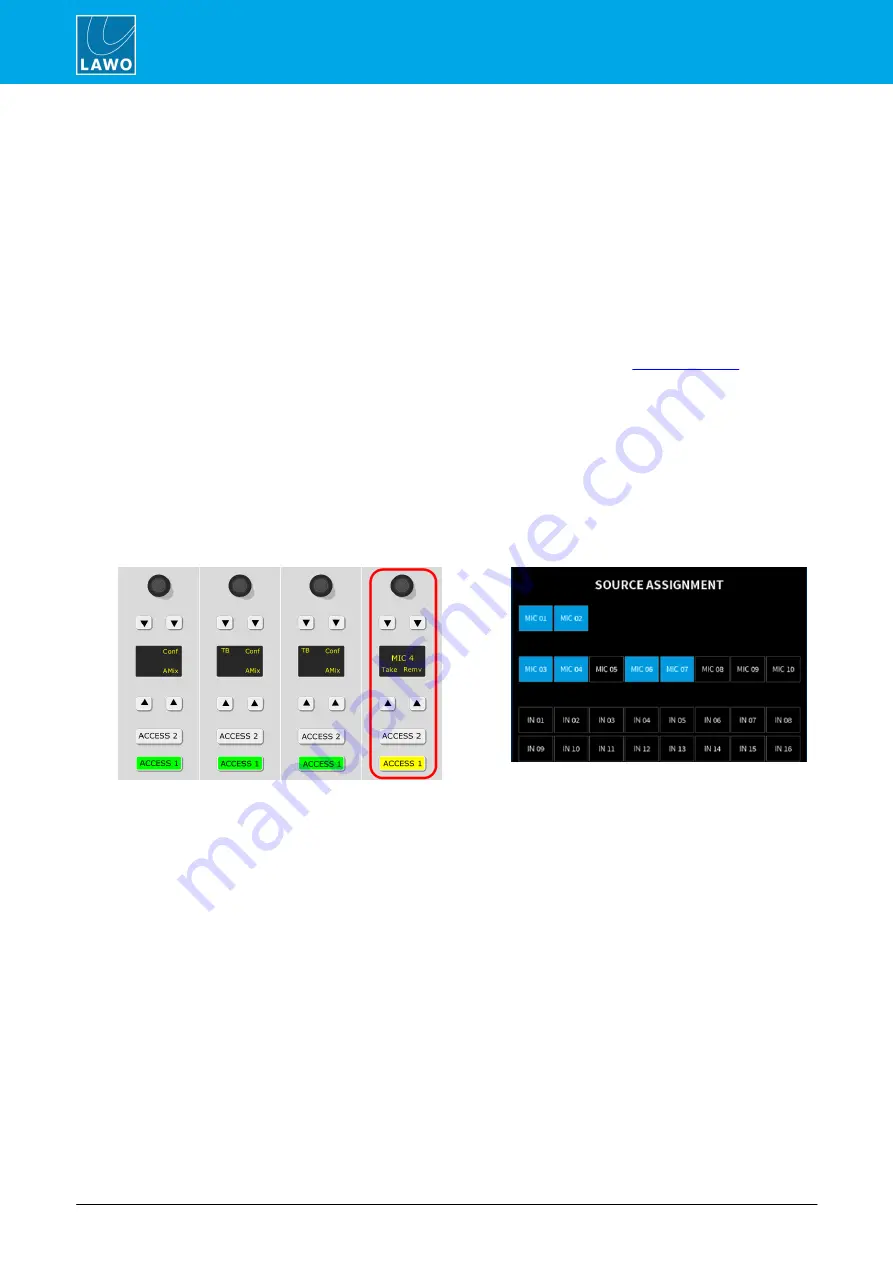
ruby User Manual
Version: 6.6.0/1
36/78
6. Operation
6.5
Assigning Fader Strips
Any source or summing bus defined in your configuration can be assigned to any fader strip. Please note:
·
All sources assigned to fader strips are active in the mix, including sources assigned to Layers 1 and 2
and to virtual fader strips.
·
The maximum number of sources which can be summed simultaneously depends on the resources
provided by your DSP Core.
·
In the configuration, if the Only Default option is enabled for a fader strip, then its source cannot be
reassigned.
·
Sources are made available for assignment using the List Enable option in the configuration.
·
A source can be assigned only once; you cannot assign a source to two different faders. However, you
can map a fader so that it can be controlled from two different locations, see
·
Your user rights may globally disable the "source assign" mode.
6.5.1
Assigning a Source to a Fader
1
.
Double-press an
ACCESS
key (it turns yellow) - the fader strip switches into "strip assign" mode, and
the "Source Assignment" buttons appear on VisTool.
Note that you can double-press either
ACCESS 1
or
ACCESS 2
to assign the main or alternate layer.
Fader Strips (source assign mode)
VisTool (source assign view)
Scroll down for more sources.
On VisTool, the buttons are color-coded to show the current status of each source:
·
Black
= source not assigned and available.
·
Blue
= source assigned and available (its fader is closed).
·
Red
= source assigned and NOT available (its fader is open).
If you choose a blue source, then it will move from its existing location to the fader strip in access.
You cannot choose a red source as it is deemed to be on-air. In this instance, first find the source on the
surface and close its fader - the button color changes from red to blue, and the source can be selected.






























